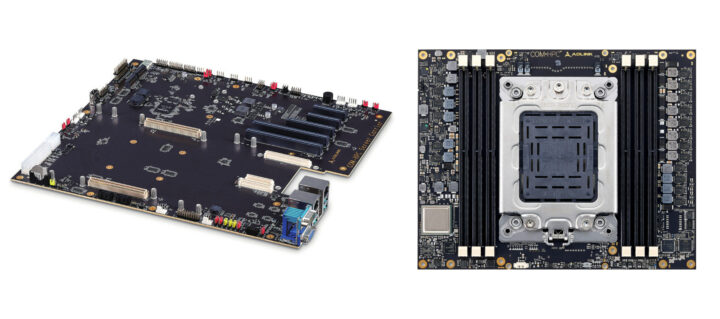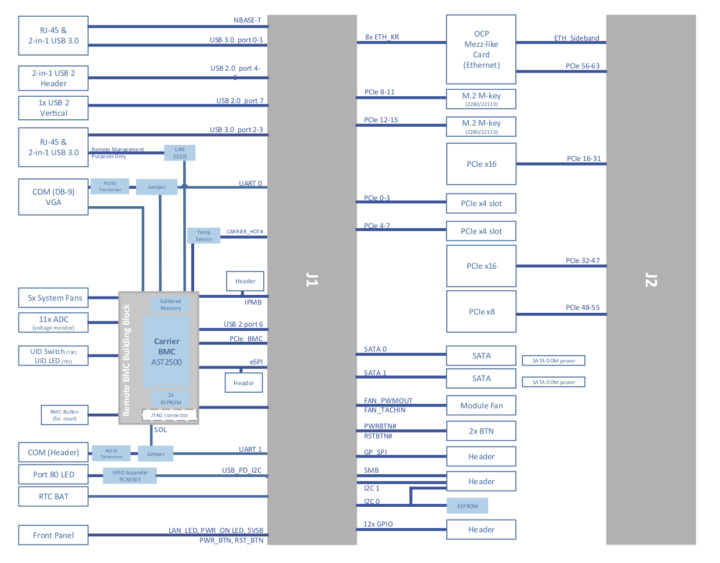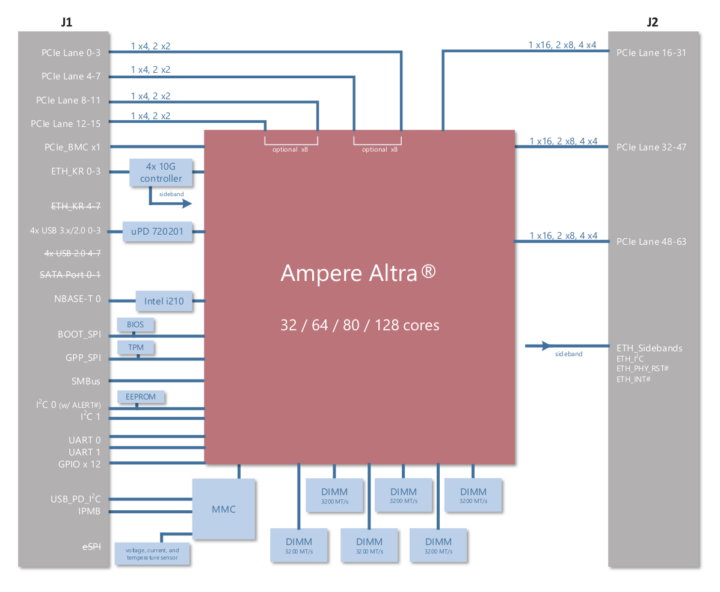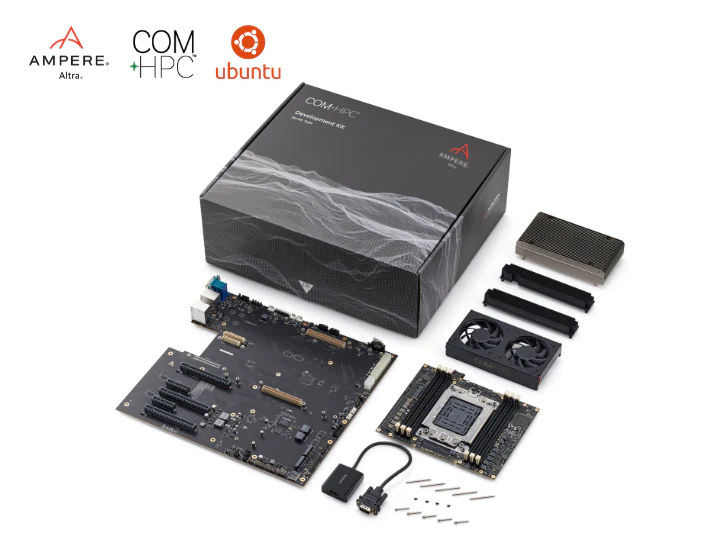ADLINK Ampere Altra Dev Kit is an “IoT prototyping kit” based on an ATX motherboard fitted with a COM-HPC-ALT Server Type Size E module powered by an Ampere Altra 32, 64, or 80-core Arm Neoverse N1 server processor, and supporting up to 768GB DDR4 memory.
It’s basically the same hardware as found in the Ampere Altra Developer Platform (AADP), but without the tower and power supply, nor optional features like liquid cooling or 10GbE interfaces.
Ampere Altra Dev Kit (AADK) specifications and content:
- Computer-on-Module – COM-HPC Server Type Size E Ampere Altra module with Ampere Altra 32 to 80-core 64-bit Arm Neoverse N1 processor up to 1.7/2.2/2.6 GHz (32/64/80 cores, TPD: 60W to 175W), up to 768 DDR4 ECC memory
- Mainboard – COM-HPC Server Base carrier board
- Storage – 2x M.2 slot for NVMe SSD
- Video – VGA port
- Audio – 3.5mm audio jack
- Networking – 1x Gigabit Ethernet
- Expansion – 3x PCIe x16 slots, 2x PCIe x4 slots
- USB – 4x USB 3.2 ports
- Serial – COM port (DB9)
- Management – 1x RJ45 console port for BMC
- Misc – Headers for 12x GPIO, SMB, 2x I2C, GP_SPI and IPMB
- Power Supply – ATX or 12V AT power input
- Dimensions – Standard ATX motherboard
- Accessories
- THSF-ALT-BL-S heatsink with fan
- 2x power part heatsinks
- VGA to HDMI adapter



The system runs the open-source EDK II UEFI firmware and supports operating systems such as Ubuntu 20.04, Centos 8, or even Windows, as well as popular hypervisors and software. The documentation is not yet ready, but we’ve been told it should be updated within one or two weeks. You can already find “DOCS+” COM-HPC documentation that should have the same software documentation as other Ampere Altra hardware platforms from the company, and a tab specific to the Dev Kit should eventually be added to the website.
Prices are coming down. The Ampere Altra Developer Platform initially launched for $4,000 in 2020 in its minimal configuration (32-core, 4GB, 128GB SSD), but the same system is now sold for $3,250. The Ampere Altra Dev Kit is even cheaper due to the lack of memory, storage, tower, and power supply with three options offered on the i-Pi shop:
- AADK Q32 – $2,003 for a system with a 32-core Ampere Altra processor
- AADK Q64 – $2,518 for a system with a 64-core Ampere Altra processor
- AADK Q80 – $2,621 for a system with a 80-core Ampere Altra processor
If you have a business case for any of ADLINK’s Ampere Altra platforms, you can have the ability to test a server with 5-day of free remote access. Ampere and ADLINK will also co-host a webinar called “How Cloud Native Processors are Revolutionizing Edge Computing” on April 26 in time zones convenient for North American and European users.

Jean-Luc started CNX Software in 2010 as a part-time endeavor, before quitting his job as a software engineering manager, and starting to write daily news, and reviews full time later in 2011.
Support CNX Software! Donate via cryptocurrencies, become a Patron on Patreon, or purchase goods on Amazon or Aliexpress





